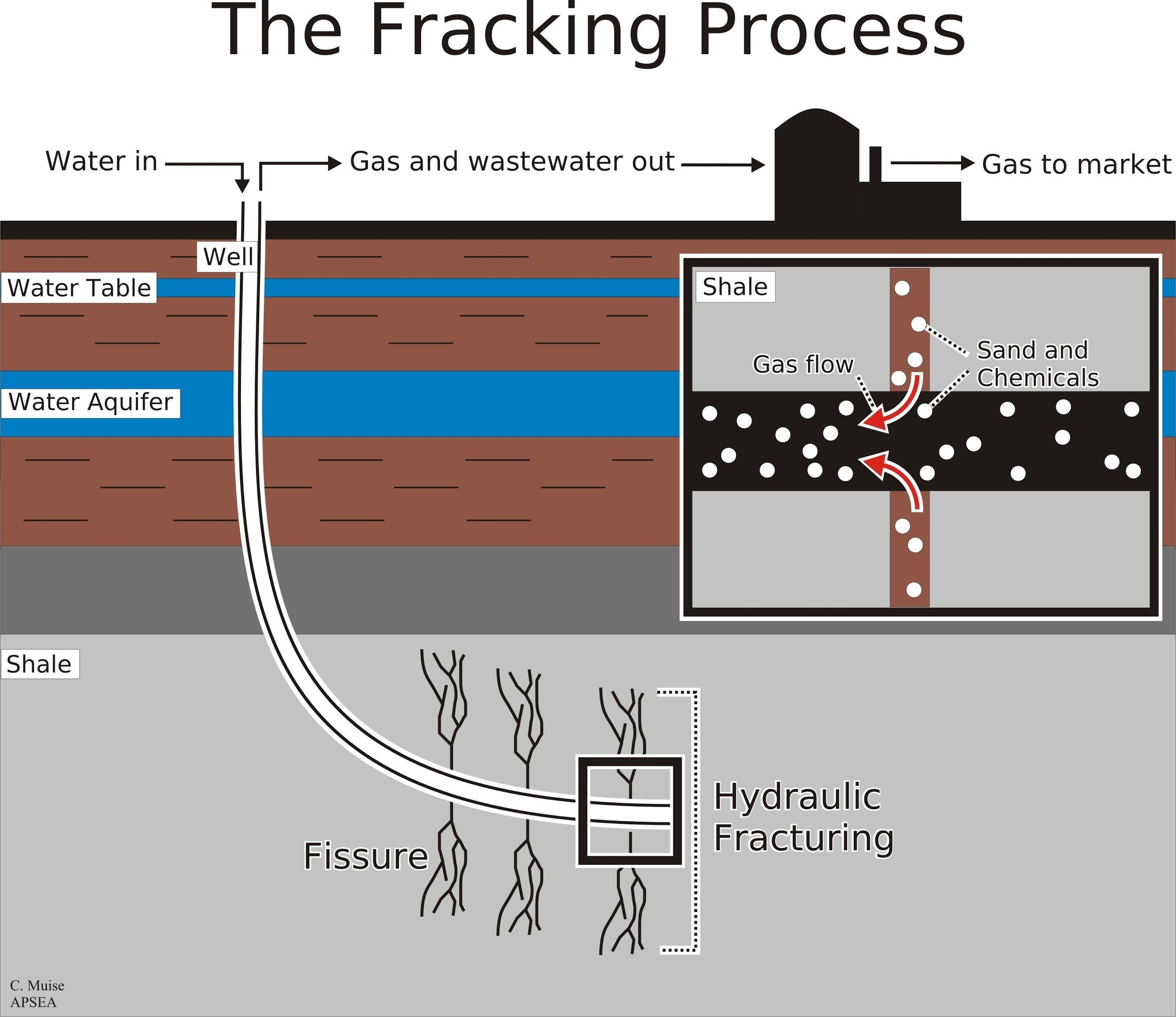Hablamos español.
Learn how fracking works and what legal options exist if you or a loved one suffer a fracking-related accident or illness
Hydraulic fracturing (commonly called “fracking”) is big business in the Lone Star State.
Advocates insist that fracking is a safe and efficient source of clean energy. Critics argue that fracking can contaminate drinking water, pollute the air, trigger earthquakes and explosions, and that it contributes to global warming.
Regardless of which side of the debate you fall on, fracking is common throughout Texas and if you’re injured as a result of fracking you’ll likely have some questions. Fortunately, we have answers.
What is fracking?
In simple terms, fracking is a process by which pressurized water, minerals, and chemicals are used to fracture underground shale deposits to harvest the natural gas and oil inside.
Although fracking has been in existence for several decades, the scale and specific method of drilling that takes place today was first used in the Barnett shale located in North Central Texas in 1999.
How common is fracking?
According to the United States Department of Energy, there were roughly 276,000 fracking wells in the US in 2000. By 2010, that number had nearly doubled to 510,000.
Every year, approximately 13,000 new fracking wells are drilled.
The Eagle Ford Shale in East Texas is one of the most productive regions in the country for oil and gas extraction companies. The estimated oil reserves contained in the Eagle Ford Shale have been set at 3 billion barrels, and the US Energy Information Administration estimates that the region holds 50.2 trillion cubic feet of recoverable gas. The region encompasses the majority of Dimmitt, Live Oak, McMullen, DeWitt, Zavala, Karnes, and LaSalle counties.
What’s more, US oil production is expected to increase 30% to 17 million barrels a day by 2023, with much of that growth coming from oil produced through fracking in West Texas.
Here are some other interesting facts about the prevalence of fracking in Texas:
- Roughly 250 billion gallons of water were used for fracking wells from 2005–2013. Approximately 44% of this water came from drought-stricken Texas reservoirs.
- Fracking wells in the US produced an estimated 280 billion gallons of wastewater in 2012. Approximately 92.8% of this wastewater was produced in Texas.
- Roughly 95% of new wells drilled today involve fracking.
Is fracking dangerous?
Those who argue that fracking is dangerous often point to the chemicals used in fracking.
According to industry-reported data collected by FraFocus, oil and gas wells fracked across the US between 2005–2015 used at least:
- 5 billion pounds of hydrochloric acid
- 1.2 billion pounds of petroleum distillates
- 445 million pounds of methanol
Other unknown chemicals are kept secret as proprietary information.
A recent analysis by researchers at the Yale School of Public Health identified 157 chemicals used in fracking that are toxic.
The use of potentially toxic chemicals is particularly concerning given that people living or working close to fracking sites can be exposed to the chemicals if they enter the drinking water after a spill or become airborne.
In addition, fracking flowback fluids can rise to the surface and create stagnant, poisonous ponds that pollute the environment and create a hazard for humans, wild animals, and livestock.
On top of the possibility of contamination, fracking can cause:
- Transportation accidents. According to Susan Christopherson of Cornell University’s Green Choices, roughly 1,340 trucks deliver water and various chemicals to and from fracking sites. These large trucks travel along rural—often poorly maintained—roads. As a result, the Centers for Disease Control and Prevention found that vehicle accidents are the top danger to workers in this field.
- Fires and explosions. When exposed to air, hydrocarbons used in fracking become highly combustible. What’s more, fracking sites are crowded with ignition sources, including diesel engines, electrical wiring, and workers who smoke.
Is fracking subject to regulation?
At the federal level, most fracking is surprisingly exempt from many of the laws you might think would apply, including:
- The Safe Drinking Water Act
- The Clean Water Act
- The Clean Air Act
- The Resource Conservation and Recovery Act
- The National Environmental Policy Act
As a result, fracking is largely regulated only at the state level and state laws vary considerably. Texas has enacted at least some regulations in these 5 areas:
- Chemical disclosures
- Well integrity, testing, and technical treating requirements
- Notices
- Seismicity
- Local bans on fracking
What are the most common injuries associated with fracking?
Workers’ compensation claims have quadrupled in the fracking industry since 2007. Common injuries suffered by employees in the fracking industry include:
- Brain injuries
- Amputations
- Eye injuries
- Electrocution
- Spinal cord injuries
For those who live and work near fracking sites, common injuries include:
- Cancer
- Digestive problems
- Nausea
- Partial paralysis
- Blindness
- Asthma
- Eye irritation
- Headaches
- Birth defects
What legal options exist if you’re injured as a result of a fracking accident?
A fracking lawsuit is a special type of personal injury case, known as a “toxic tort,” in which the defendant (typically an oil or gas drilling company) is accused of negligent behavior that resulted in the physical or financial injury of the plaintiff (usually a person, community, or business).
In toxic tort cases, the plaintiff must prove that negligent practices (i.e., carelessness) resulted in their exposure to harmful contaminants which caused them undue harm. If their claim is successful, the victim or victims can receive compensation for the following damages:
- Past and future medical care
- Any necessary rehabilitation
- Loss of past and future earnings
- Loss of earning capacity
- Loss of quality of life
- Pain and suffering
- Property damage
- Reduction of property value
- Loss of livestock, crops, etc.
In some cases, punitive damages may also be awarded if it can be proven that the fracking company acted intentionally or engaged in gross negligence. Punitive damages are intended to punish the offending party, whereas other economic and non-economic damages are calculated based on the loss experienced by the plaintiff.
When workers are injured, a workers’ compensation claim may be appropriate. Workers’ compensation is a form of insurance that pays benefits to employees injured while working. The vast majority of employers in Texas are required to carry workers’ compensation insurance.
Do I need an attorney?
Oil and gas companies tend to have a lot of money to mount a defense against a toxic tort lawsuit. What’s more, it can often be difficult to prove that a toxic chemical caused the injuries you sustained. For these reasons, it’s imperative you talk to an attorney if you’re considering filing a toxic tort claim.
Having trouble locating an experienced attorney in Texas to handle your fracking claim? Check out our free online directory.
See our guide Choosing a personal injury attorney.



